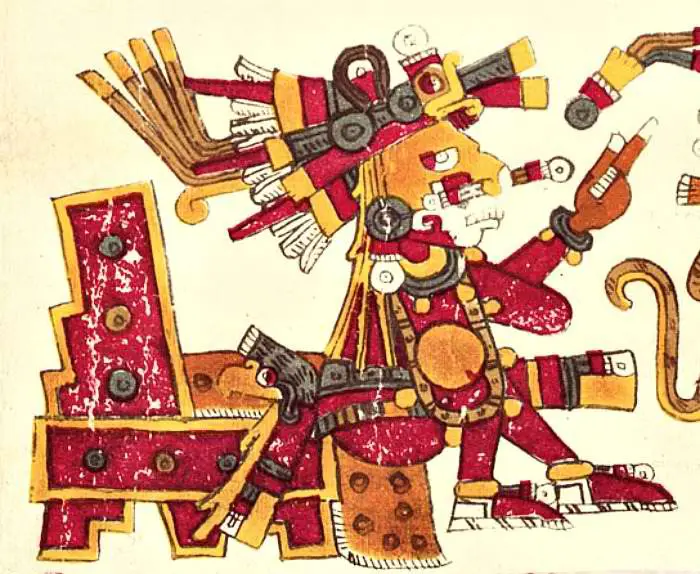Aztec gods were super important to the Aztec people. They worshiped and feared their gods. Aztecs built temples and made sacrifices to their gods to thank them for everything the gods had provided. They made sacrifices before and after wars and sometimes included human sacrifices to appease their gods. There were gods of war, water, the harvest, and more. The Aztecs based a big part of their lives worshiping their gods.
Ometecuhtli/Omecihuatl
Symbol of fertility, creation, duality, fire
This dual god and goddess was the creator of the world. Ometecuhtli and Omecihuatl were a dual god and goddess. He/she represented duality in the natural world and life such as male and female, good and evil, love and hate, chaos, and order. He/she created themselves out of the void and then had children, four children. Their children created the directions North, South, East, and West and then went on to create the world. He/she is usually represented with ears of corn adorning him/her to represent the Earth’s fertility. Corn was one of the main crops in Aztec culture.
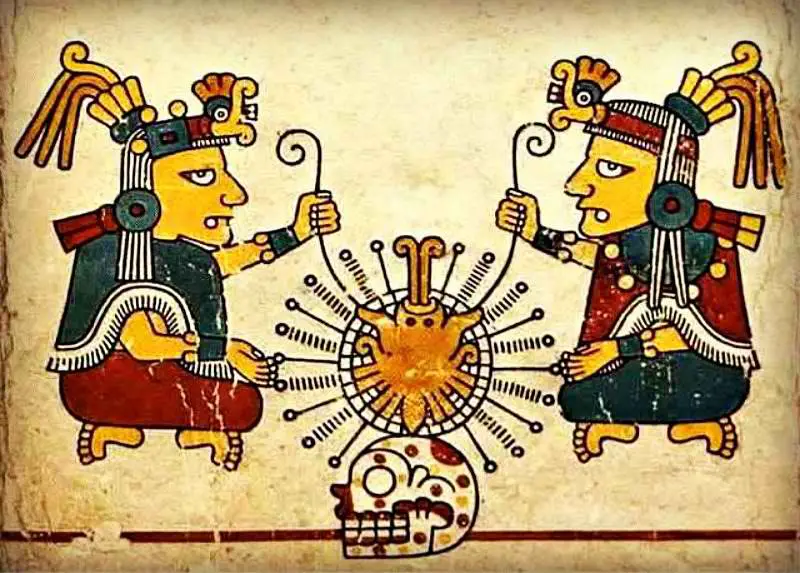
Sun Gods
There were many different sun gods in the Aztec culture. Here are some of them.
Tezcatlipoca
Symbol of fire, night, discord, rulership, divination, war, temptation, beauty, strife
Tezcatlipoca was one of Ometecuhtli/Omecihuatl’s sons. His spirit animal is the jaguar, and his symbol is obsidian. He is sometimes called the Smoking Mirror. Obsidian is a dark stone that Mesoamericans used to make mirrors for prophecies. Tezcatlipoca was often depicted with an obsidian stone in place of his foot or an obsidian mirror on his chest. He also has a black and yellow stripe on his face. He was the god of the North. Tezcatlipoca’s main rival was Quetzalcoatl. After they created the world together, Tezcatlipoca decided he would be the sun god. Quetzalcoatl did not like this because he thought Tezcatlipoca was a depiction of the night due to Tezcatlipoca’s obsidian foot. Quetzalcoatl knocked Tezcatlipoca out of the sky and Tezcatlipoca transformed into a jaguar and destroyed the world.
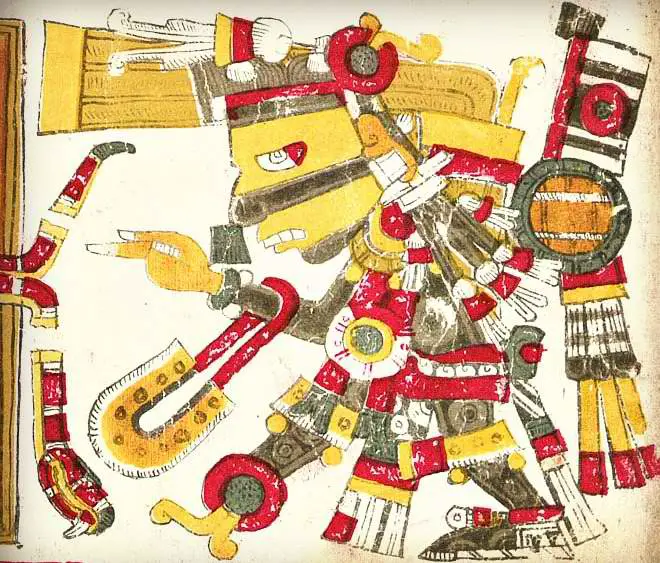
Quetzalcoatl
Symbol of learning, wind, air, justice, mercy
Another son of Ometecuhtli/Omecihual, Zuetzalcoati took over as Lord of the Sun when he knocked Tezcatlipoca out of the sky. His name means feathered serpent or dragon. His symbol is a conch shell that was cut in half and worn on the chest. The design of the conch shell represents the wind. A powerful wind blows in a spiral motion in hurricanes or tornadoes. Quetzalcoatl was represented by rattlesnakes, resplendent quetzals, crows, and macaws. He is also represented by ducks, spider monkeys, and the harpy eagle. He created the boundary between the sky and Earth. He created a new civilization after Tezcatlipoca destroyed the first one. This civilization did not honor the gods, so Tezcatlipoca turned them into monkeys. Quetzalcoatl blew all the monkeys off of the Earth. He then gave up being the Sun God in order to repopulate Earth.
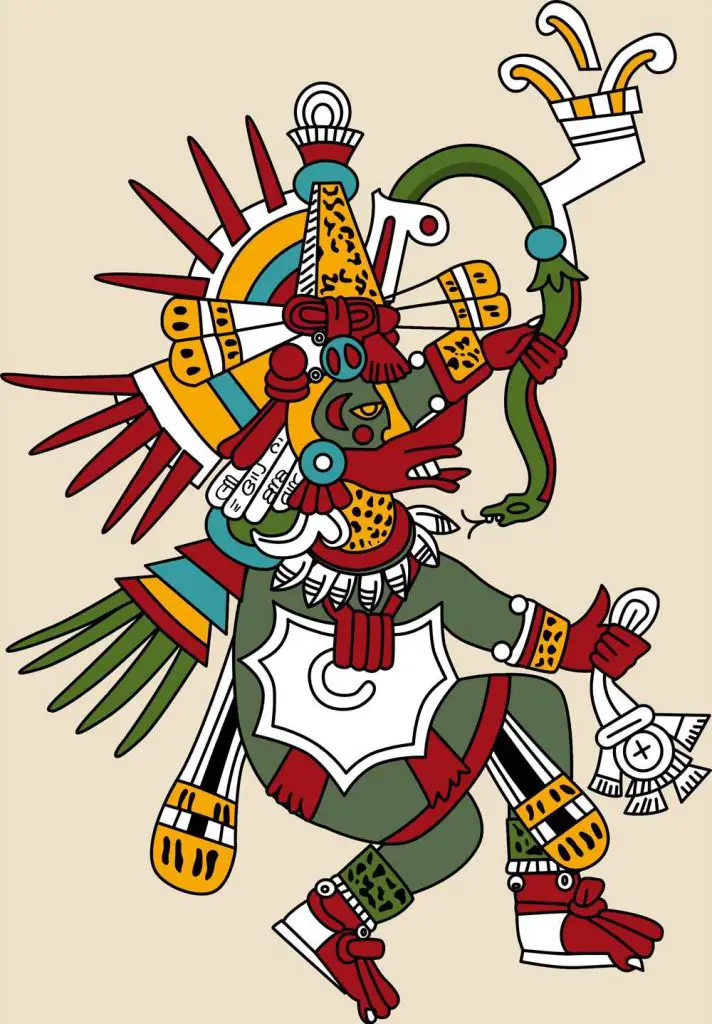
Tlaloc
Symbol of fertility
The third sun was Tialoc, who was the god of fertility, rain, and water. He could be benevolent or unmerciful. He either gave life or took it away by blessing the Earth with rain or hurtling thunderbolts or hail down from the sky. Tlaloc’s animal forms were shellfish, amphibians, snails, and herons. He lived in an active volcano now known as Mount Tlaloc. Tlaloc is depicted with fangs and protruding eyes. He is usually holding water, lighting, or corn. The four Tlalocs mark the four corners of the universe and control time. Tlaloc was married to Xochiquetzal, who was the goddess of corn, sex, and flowers. Tezcatlipoca seduced her away from Tlaloc, and Tlaloc was depressed. He refused to make it rain, and there was a drought on Earth. The people prayed to him, but he did not listen to their prayers. Finally, he had enough of the people begging him to help them. Tlaloc made it rain fire and destroyed the Earth.
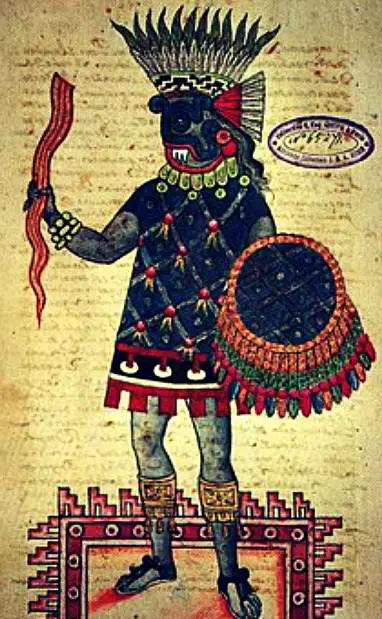
Chalchiuhtlicue
Symbol of childbirth, fertility, and protection.
Chalchiuhtlicue was the goddess of baptisms, streams, water, rivers, storms, and seas. She protected women and children and made the crops fertile. She was Tlaloc’s second wife. She was the fourth Sun, and she was a benevolent ruler who loved the Earth and the people. Tezcatlipoca spread the rumor that Chalchiuhtlicue was faking her kindness and loyalty to her people. He said that she just wanted the people to worship her, and she did not care about them. This broke Chalchiuhtlicue’s heart, and she wept for 52 years. Her tears caused a flood that wiped out the life on the Earth.
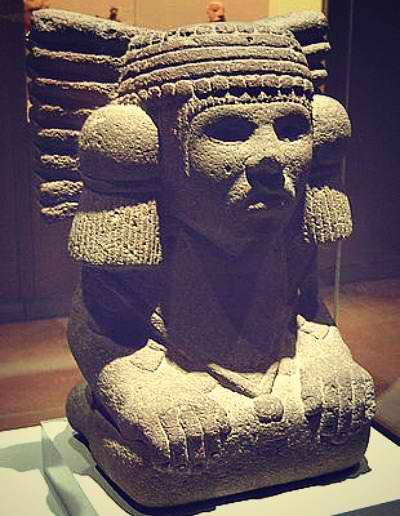
Nanahuatl
Symbol of humility.
Nanahuatl was a god that was covered in sores. He was a humble God who cared for everyone. Nanahuatl is usually depicted as a god emerging from flames. When the gods needed to pick a fifth sun they chose Nanahuatl and Tonatiuh to become the moon and the sun. Because Nanahuatl actually gave a blood sacrifice to the gods and practiced penance before sacrificing himself to the flame to become the moon, the gods made him the sun.
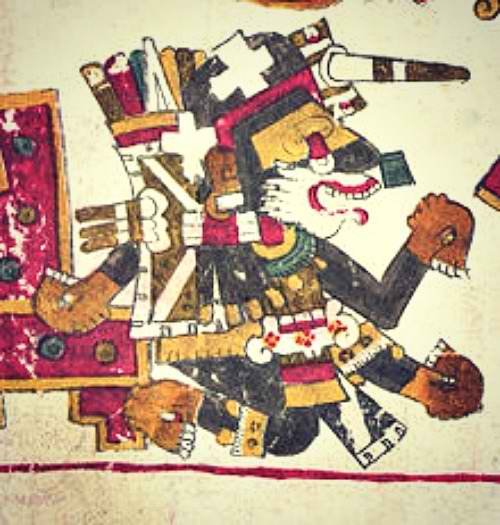
Tonatiuh
Symbol of the present, war.
Tonatiuh was the son of Chalchiuhtlicue and Tlaloc. He was chosen to be the fifth sun, but when it came time for him to jump into the fire, he could not. Nanahuatl jumped into the flames, which embarrassed Tonatiuh. He quickly followed, and they created two suns. However, the gods were angry with Tonatiuh, and they threw a rabbit at him, causing him to lose his luster. He then became the moon forever chasing Nanahuatl across the sky. In other cultures, he became a sun god who was fierce and waged war on the underworld each night.
Huitzilopochtli
Symbol of sacrifice, fire, and war
Huitzilopochtli was a son of Ometecuhtli/Omecihuatl and was considered the primary god of war in the Aztec culture. He carried the fire serpent, which made him a symbol of fire. Because he was so powerful and strong, he became the fifth sun. The stars, or Tzizimimeh, were jealous of Huitzilopochtli and chased him across the night sky, thus creating the days and nights. The Aztecs would offer him blood sacrifices to help him in his continuous battle to keep the Earth intact. The Aztecs believed that if they did not appease their gods with sacrifices, the fifth sun would turn black and the world would be destroyed.
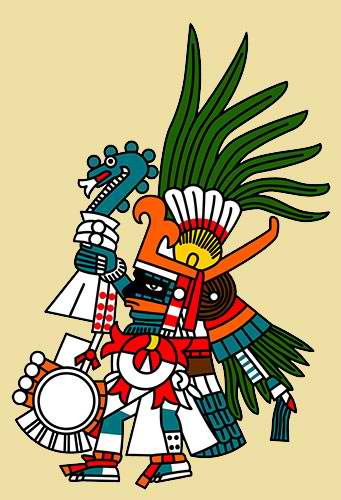
Other Gods and Goddesses
Xipe Totec
Symbol of renewal, rebirth.
Xipe Totec would flay his skin to produce food for his people. This was symbolic of snakes shedding their skin or a corn seed losing its outer skin. He was usually depicted with a rattle staff and pointed hat as the Mexican emperor was commonly attired. Xipe Totec invented war and had a golden body when he was done flaying his skin. He was said to cure diseases such as smallpox, eye diseases, and the plague. His worshipers would make sacrifices to him in order to get well. The Aztecs would hold a festival around the spring equinox that was dedicated to Xipe Totec. They would flay a person, and the priests would wear the skins for twenty days. The skins were believed to have healing powers. After twenty days, the skins would be placed in an airtight container and stored beneath the temple.
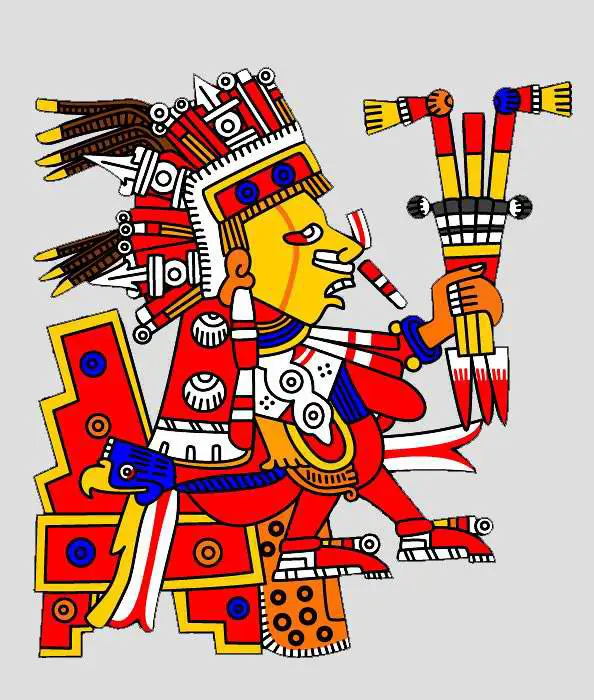
Centeotl
Symbol of sustenance, good fortune.
Centeotl was the god of maize. He is depicted with ears of corn and a dark line from his eyebrows to his jawline. His mother was the goddess of childbirth and fertility, and his wife was the first woman to give birth. According to Aztec legend, Centeotl journeyed to the underworld and brought back sweet potatoes and cotton for the people. There was a festival for the maize god where women wore ears of corn and seeds were placed on an altar in everyone’s home. Blood sacrifices were made to Centeotl during this time.
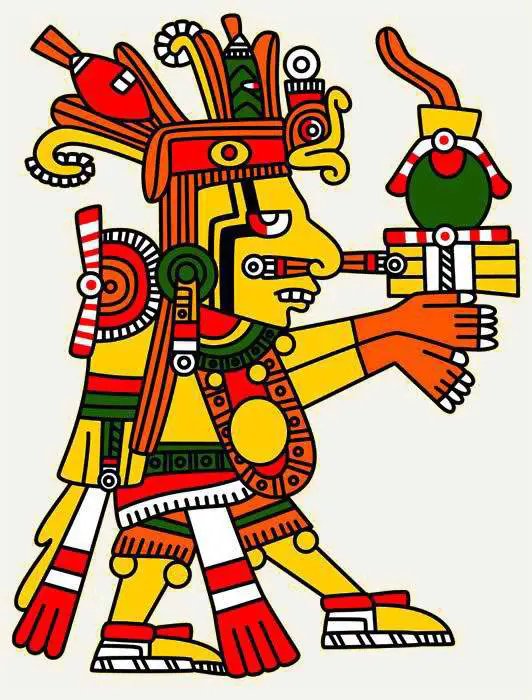
Tlazolteotl
Symbol of purification, fertility, and birth.
Tlazolteotl was the goddess of purification, sin, fertility, and birth. She is the mother of Centeotl. Tlazolteotl would give sinners diseases that could be cured by steam baths and sacrifices to her. She was also a deity of dirt and purification. The duality of her nature was seen in depictions of her eating dirt. She would eat the dirt and then purify it like a sin eater. Tlazolteotl was the goddess of compost dirt which generated new life. Cleansing rituals were held in her honor during the harvest season. She was the guardian of the Tree of the West – a tree of life in the Aztec culture.
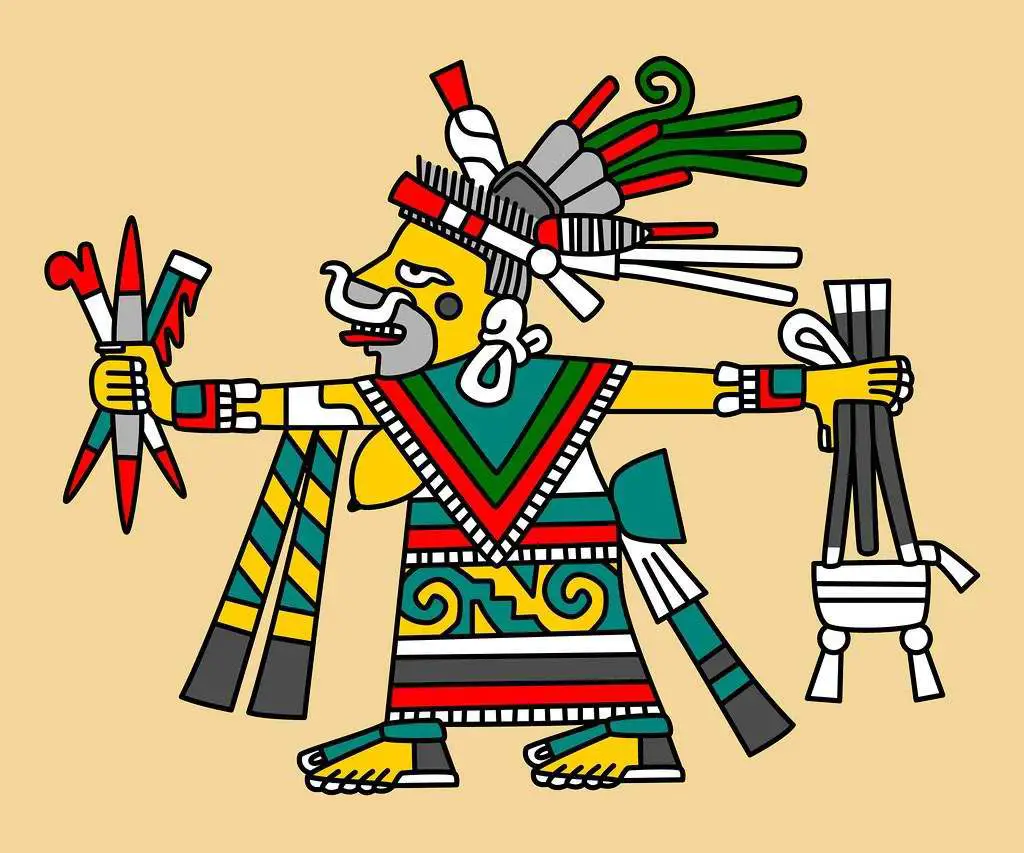
Xochiquetzal
Symbol of love, protection, and power.
Xochiquetzal was the daughter of Tlazolteotl. She was married to Tlaloc until Tezcatlipoca abducted her and forced her to marry him. Her depiction is of a young, beautiful woman surrounded by butterflies and birds holding flowers. She is associated with flowers and vegetation. She was the protector of women and household arts such as weaving and was associated with mothers as well as prostitutes. Xochiquetzal was one of the only fertility goddesses to encourage sex for pleasure, as opposed to procreation.
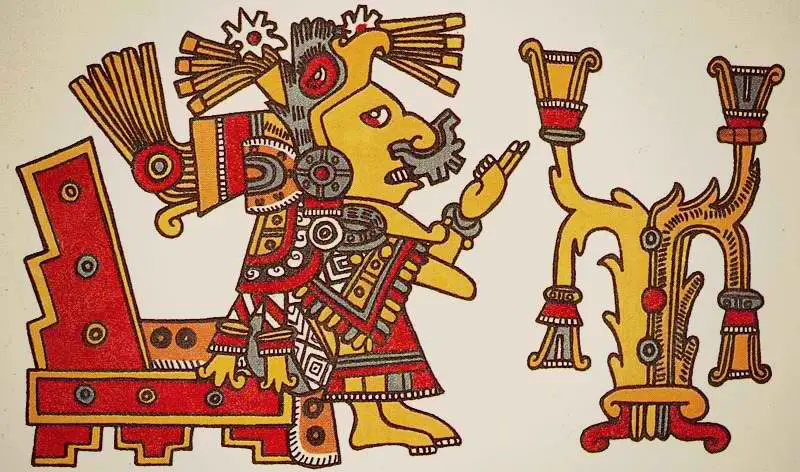
Xochipilli
Symbol of growth, fertility, love, pleasure, and creativity.
Xochipilli was Xochiquetzal’s twin brother. He was called the flower prince and was married to a human. He is depicted wearing a mother-of-pearl pendant in the shape of a teardrop. He was a god of pleasure and mischief who liked practical jokes. He was not a vengeful god; in fact, he was a relaxed god who wanted everyone to prosper and be happy. There is a famous statue of Xochipilli which depicts him sitting in a trance state among hallucinogenic flowers.
